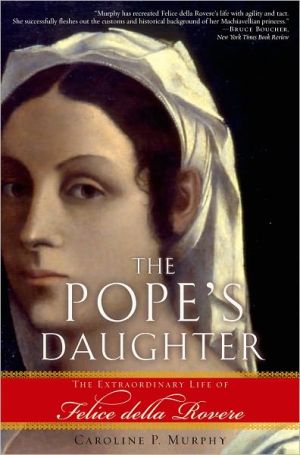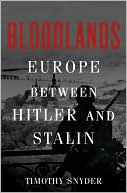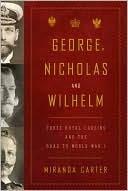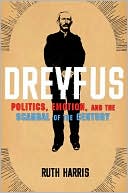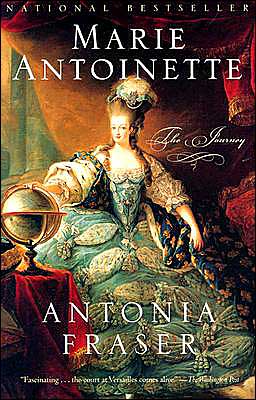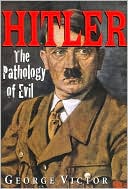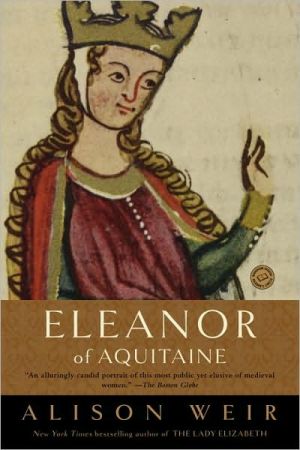Pope's Daughter: The Extraordinary Life of Felice della Rovere
The illegitimate daughter of Pope Julius II, Felice della Rovere became one of the most powerful and accomplished women of the Italian Renaissance. Now, Caroline Murphy vividly captures the untold story of a rare woman who moved with confidence through a world of popes and princes.\ Using a wide variety of sources, including Felice's personal correspondence, as well as diaries, account books, and chronicles of Renaissance Rome, Murphy skillfully weaves a compelling portrait of this...
Search in google:
The illegitimate daughter of Pope Julius II, Felice della Rovere became one of the most powerful and accomplished women of the Italian Renaissance. Now, Caroline Murphy vividly captures the untold story of a rare woman who moved with confidence through a world of popes and princes. Using a wide variety of sources, including Felice's personal correspondence, as well as diaries, account books, and chronicles of Renaissance Rome, Murphy skillfully weaves a compelling portrait of this remarkable woman. Felice della Rovere was to witness Michelangelo paint the Sistine Chapel, watch her father Pope Julius II lay the foundation stone for the new Saint Peter's, and saw herself immortalized by Raphael in his Vatican frescos. With her marriage to Gian Giordano Orsini—arranged, though not attended, by her father the Pope—she came to possess great wealth and power, assets which she used to her advantage. While her father lived, Felice exercised much influence in the affairs of Rome, even egotiating for peace with the Queen of France. After his death, Felice persevered, making allies of the cardinals and clerics of St. Peter's and maintaining her control of the Orsini land through tenacity, ingenuity, and carefully cultivated political savvy. She survived the Sack of Rome in 1527, but her greatest enemy proved to be her own stepson Napoleone, whose rivalry with his stepbrother Girolamo ended suddenly and violently, and brought her perilously close to losing everything she had spent her life acquiring. With a marvelous cast of characters, The Pope's Daughter is a spellbinding biography set against the brilliant backdrop of Renaissance Rome. Bruce Boucher Caroline Murphy has recreated Felice della Rovere's life with agility and tact. She successfully fleshes out the customs and historical background of her Machiavellian princess, even though there is not enough foreground to evoke a strong sense of the woman herself. Felice's words rarely convey the drama of her life: she wrote no poetry; all her letters dealt with business; and she did not commission any major work of art. Still, Felice's achievements were remarkable, given her birth and sex. But to understand her personality one must read between the lines.*#151; Thee New York Times
\ Bruce BoucherCaroline Murphy has recreated Felice della Rovere's life with agility and tact. She successfully fleshes out the customs and historical background of her Machiavellian princess, even though there is not enough foreground to evoke a strong sense of the woman herself. Felice's words rarely convey the drama of her life: she wrote no poetry; all her letters dealt with business; and she did not commission any major work of art. Still, Felice's achievements were remarkable, given her birth and sex. But to understand her personality one must read between the lines.\ *#151; Thee New York Times\ \ \ \ \ Publishers WeeklyFelice della Rovere (1483?-1536) emerges from obscurity to rival other great Renaissance women in this rendering of her life and legacy by Renaissance art scholar Murphy (Lavinia Fontana). Offspring of what was probably a brief liaison between Cardinal Giuliano della Rovere-later Pope Julius II-and Lucrezia Normanni, daughter of an old Roman family, Felice grew up in her mother's house. Pope Julius, the great rebuilder of Rome and patron of Michelangelo, proved to be a generous father, marrying Felice into the Orsini family, which gave her social legitimacy, and providing her with the means to develop her own estates. Negotiating a complicated set of family and social relationships, Felice became a woman of stature and wealth, able to serve as a negotiator for her father in both international and Italian affairs. Felice's experience is woven into the lives of such notable figures as Catherine de Medici, Baldessar Castiglione and Michelangelo. Some of Murphy's speculations about Felice's emotions, especially in the early stages of her life, are less than convincing given the lack of evidence. Nonetheless, one feels in reading this vivid biography that one has gotten to know a woman of energy and talent who became "the most powerful woman in Rome of her day." 30 b&w illus. Agent, Melanie Jackson. (July) Copyright 2005 Reed Business Information.\ \ \ Library JournalFelice della Rovere was the illegitimate daughter of Pope Julius II, the pope for whom Michelangelo painted the Sistine Chapel ceiling. Although Julius II was much more discreet about his daughter than his predecessor, Pope Alexander VI, had been about his daughter Lucretia Borgia, Murphy (Renaissance art, Univ. of California, Riverside; Lavinia Fontana: A Painter and Her Patrons in Sixteenth Century Bologna) has used such primary sources as Felice's diaries, account books, and other Orsini archival materials to bring into the foreground a woman who lived in the midst of the political and cultural intrigues of Renaissance Rome. Felice was ultimately married to the head of the powerful Roman Orsini family and bore him two sons and a daughter. When Orsini died, Felice became the regent for her two young sons, which made her one of the most powerful women of the era. Murphy's chapters are short, making for a readable narrative style, and each is headed by a black-and-white illustration from the period. (There will also be an eight-page color insert.) Enhanced by an extensive bibliography, this absorbing book belongs in any collection of women's studies, Renaissance history, or the history of the popes.-Br. Benet Exton, O.S.B., St. Gregory's Univ. Lib., OK Copyright 2005 Reed Business Information.\ \
